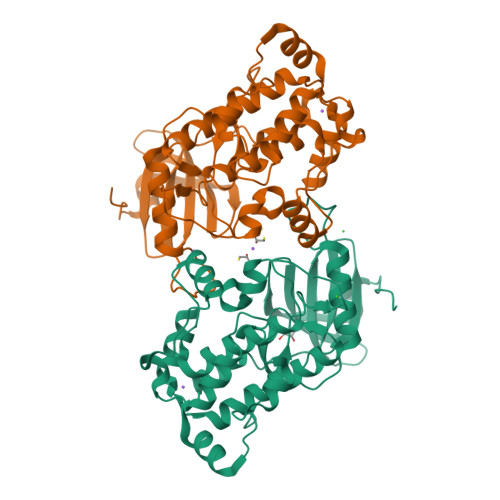Death-Associated Protein Kinase Activity Is Regulated by Coupled Calcium/Calmodulin Binding to Two Distinct Sites
Simon, B., Huart, A.S., Temmerman, K., Vahokoski, J., Mertens, H.D., Komadina, D., Hoffmann, J.E., Yumerefendi, H., Svergun, D.I., Kursula, P., Schultz, C., McCarthy, A.A., Hart, D.J., Wilmanns, M.(2016) Structure
- PubMed: 27133022
- DOI: https://doi.org/10.1016/j.str.2016.03.020
- Primary Citation of Related Structures:
1YRP, 2A2A, 2XZS - PubMed Abstract:
The regulation of many protein kinases by binding to calcium/calmodulin connects two principal mechanisms in signaling processes: protein phosphorylation and responses to dose- and time-dependent calcium signals. We used the calcium/calmodulin-dependent members of the death-associated protein kinase (DAPK) family to investigate the role of a basic DAPK signature loop near the kinase active site. In DAPK2, this loop comprises a novel dimerization-regulated calcium/calmodulin-binding site, in addition to a well-established calcium/calmodulin site in the C-terminal autoregulatory domain. Unexpectedly, impairment of the basic loop interaction site completely abolishes calcium/calmodulin binding and DAPK2 activity is reduced to a residual level, indicative of coupled binding to the two sites. This contrasts with the generally accepted view that kinase calcium/calmodulin interactions are autonomous of the kinase catalytic domain. Our data establish an intricate model of multi-step kinase activation and expand our understanding of how calcium binding connects with other mechanisms involved in kinase activity regulation.
Organizational Affiliation:
European Molecular Biology Laboratory, Hamburg Unit, Notkestrasse 85, 22607 Hamburg, Germany.





















